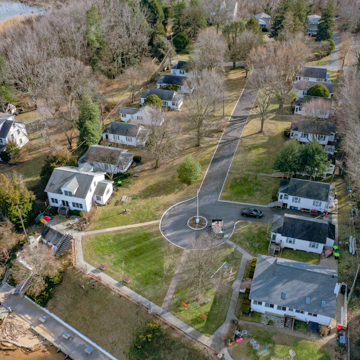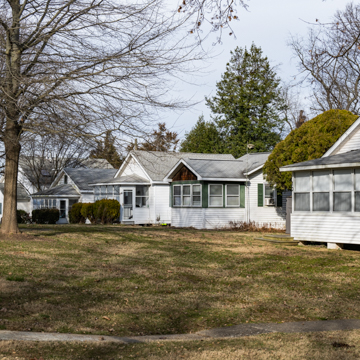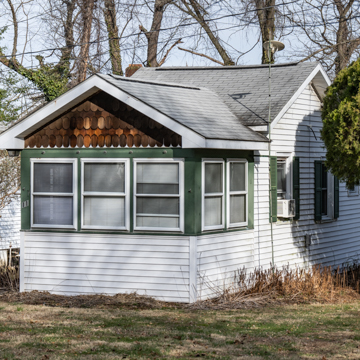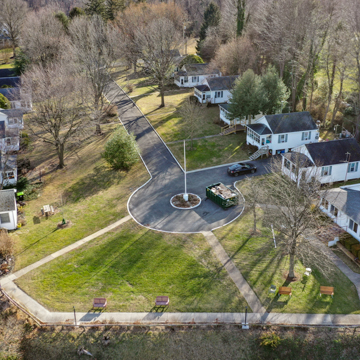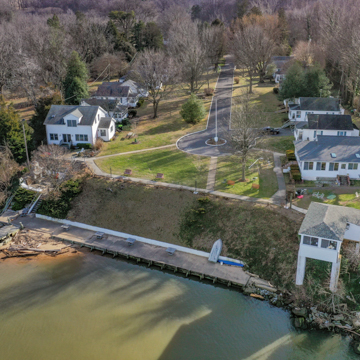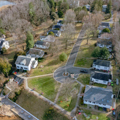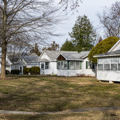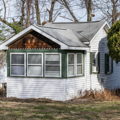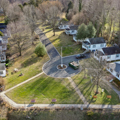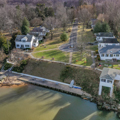The former resort town of Betterton, incorporated in 1906, sits on a bluff overlooking the Chesapeake Bay at the mouth of the Sassafras River. Steamboat lines bringing tourists from Baltimore, Philadelphia, or other cities were active on the Bay between the 1870s and 1930s, often providing links between railroad stops and Bay resorts. Betterton provided a variety of lodging from room and board offered by the wives of local fishermen in the mid-nineteenth century to over a dozen hotels as well as boardinghouses and rental cottages in the early twentieth century. Although Betterton had an amusement pier with a bowling alley, dance hall, and motion pictures, the beach was the main attraction, with superior swimming conditions because the influx of fresh water from the Upper Bay rivers discouraged the stinging nettles often found in the Lower Bay.
Betterton’s larger hotels and amusement pier have been demolished or lost to fire, but many houses and cottages remain. Still available for rental are the Evergreen Knoll cottages, two rows of small frame dwellings facing each other across a common lawn leading to the water. They share a small private beach and pier. The Great Depression forced many of the steamboat lines out of business, and construction of the Chesapeake Bay Bridge, allowing easy automobile access to the Atlantic Ocean, was the final blow for the remaining passenger steamboats. The last steamboat excursion from Baltimore to Betterton sailed in 1961, and the once bustling resort is a now a quiet residential town. The Betterton Heritage Museum located in the former Most Precious Blood Catholic Church (c. 1911; 100 Main Street) offers exhibits on the town’s history, including the Betterton ark, an 1886 fishing shanty.






